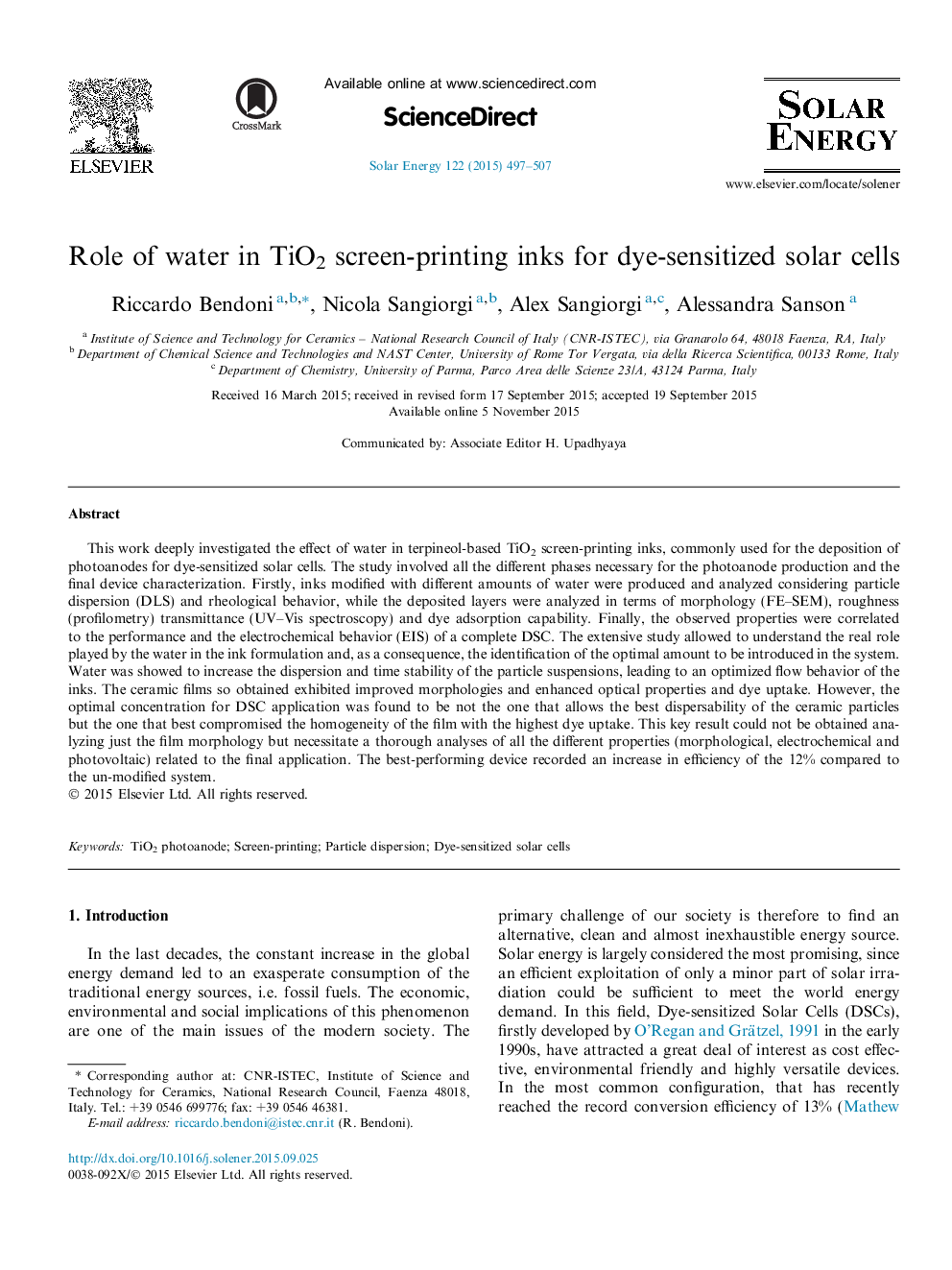| کد مقاله | کد نشریه | سال انتشار | مقاله انگلیسی | نسخه تمام متن |
|---|---|---|---|---|
| 1549602 | 1513096 | 2015 | 11 صفحه PDF | دانلود رایگان |
عنوان انگلیسی مقاله ISI
Role of water in TiO2 screen-printing inks for dye-sensitized solar cells
دانلود مقاله + سفارش ترجمه
دانلود مقاله ISI انگلیسی
رایگان برای ایرانیان
کلمات کلیدی
موضوعات مرتبط
مهندسی و علوم پایه
مهندسی انرژی
انرژی های تجدید پذیر، توسعه پایدار و محیط زیست
پیش نمایش صفحه اول مقاله

چکیده انگلیسی
This work deeply investigated the effect of water in terpineol-based TiO2 screen-printing inks, commonly used for the deposition of photoanodes for dye-sensitized solar cells. The study involved all the different phases necessary for the photoanode production and the final device characterization. Firstly, inks modified with different amounts of water were produced and analyzed considering particle dispersion (DLS) and rheological behavior, while the deposited layers were analyzed in terms of morphology (FE-SEM), roughness (profilometry) transmittance (UV-Vis spectroscopy) and dye adsorption capability. Finally, the observed properties were correlated to the performance and the electrochemical behavior (EIS) of a complete DSC. The extensive study allowed to understand the real role played by the water in the ink formulation and, as a consequence, the identification of the optimal amount to be introduced in the system. Water was showed to increase the dispersion and time stability of the particle suspensions, leading to an optimized flow behavior of the inks. The ceramic films so obtained exhibited improved morphologies and enhanced optical properties and dye uptake. However, the optimal concentration for DSC application was found to be not the one that allows the best dispersability of the ceramic particles but the one that best compromised the homogeneity of the film with the highest dye uptake. This key result could not be obtained analyzing just the film morphology but necessitate a thorough analyses of all the different properties (morphological, electrochemical and photovoltaic) related to the final application. The best-performing device recorded an increase in efficiency of the 12% compared to the un-modified system.
ناشر
Database: Elsevier - ScienceDirect (ساینس دایرکت)
Journal: Solar Energy - Volume 122, December 2015, Pages 497-507
Journal: Solar Energy - Volume 122, December 2015, Pages 497-507
نویسندگان
Riccardo Bendoni, Nicola Sangiorgi, Alex Sangiorgi, Alessandra Sanson,